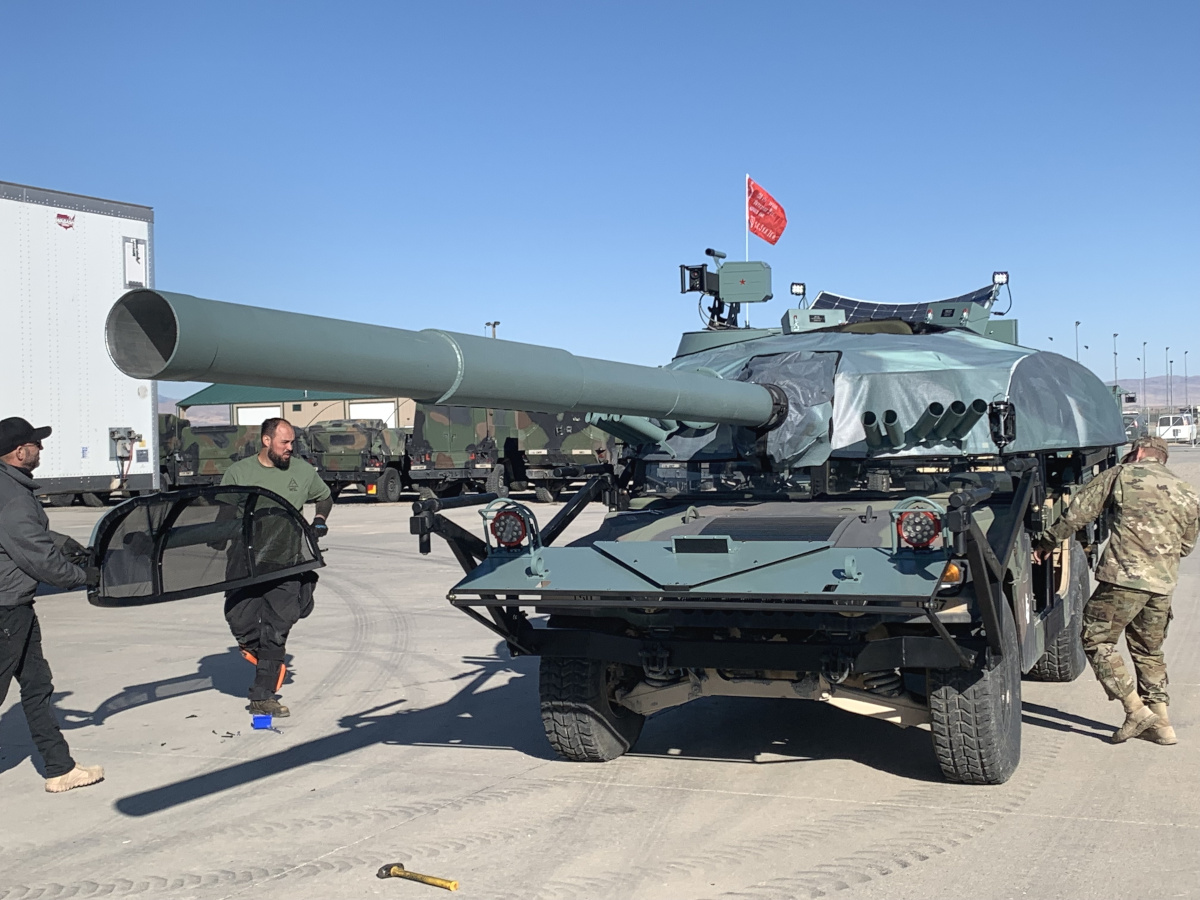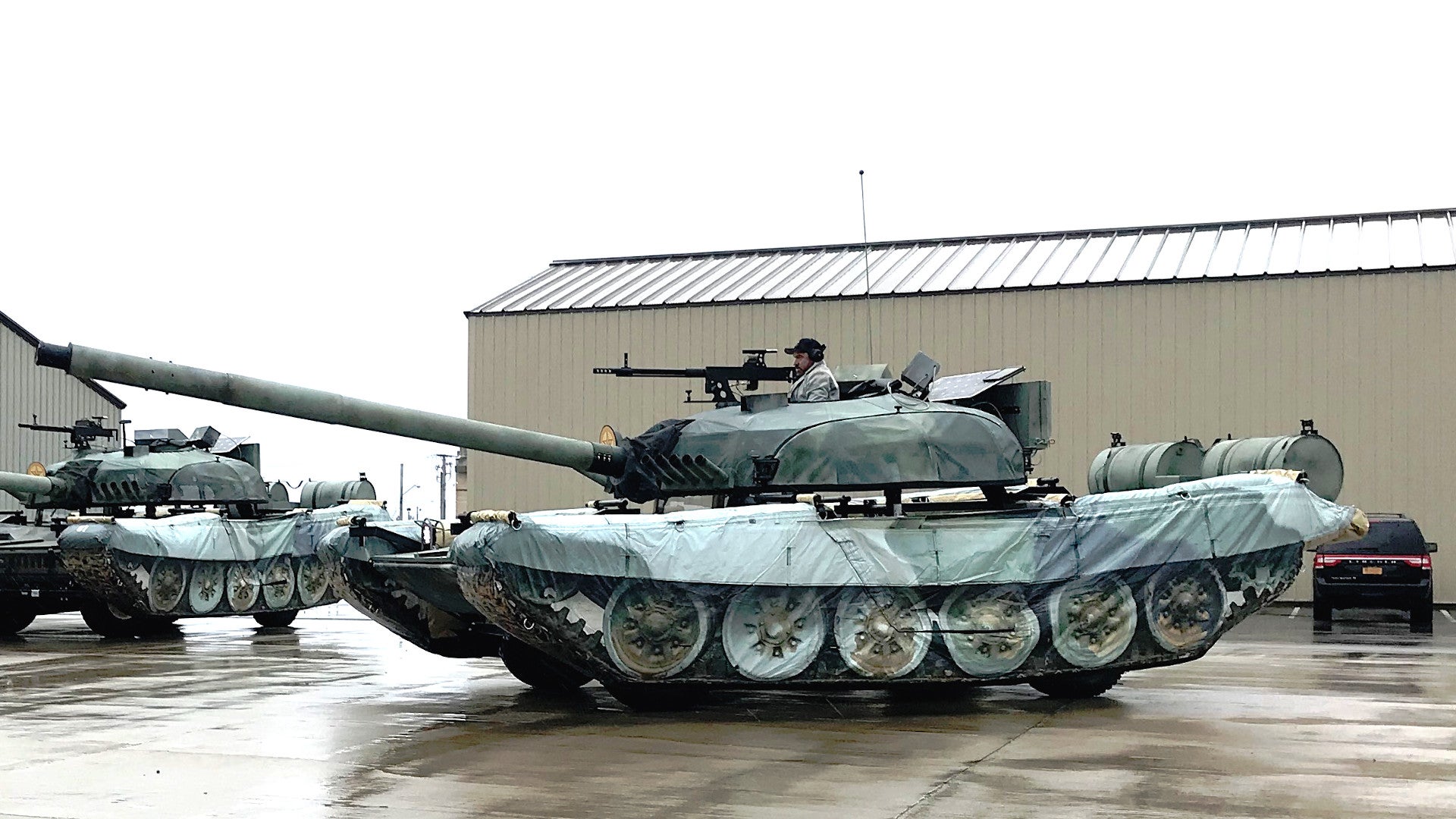One of the obvious joys of Halloween is being able to dress up in fantastic or ridiculous costumes and enjoy the night out with your friends. So, it seems somehow very appropriate that the Idaho Army National Guard recently chose to highlight how it has been dressing up Humvees in their own “costumes” of sorts so they can masquerade as low-cost substitutes for Russian-designed T-72 tanks and 8×8 BTR-90 wheeled armored personnel carriers during training exercises.
The Idaho Army National Guard recently worked together with WestEfx to transform a dozen M1097 Humvees into a mix of surrogate T-72s and BTR-90s at the Orchard Combat Training Center. The California-headquartered company, which now has a dedicated military services division for this kind of work, started out first doing special effects for commercials, music videos, and Hollywood movies, including blockbusters such as Men In Black II and recent entries in the Taken and James Bond series. The firm has been working with various National Guard units since 2018, when the main National Guard Bureau first hired it to help with improving its the Exportable Combat Training Capability program, or XCTC.
“We will be able to train against a realistic enemy,” Sergeant 1st Class Clinton Doramus, who manages the Idaho Army National Guard’s fleet of “visually modified” vehicles, or VISMODS, at the Orchard Combat Training Center said in a statement. “These kits aren’t going to look and act like a Humvee. They are going to look and act like T-72s and BTR-90s.”

WestEfx’s kits primarily consist of lightweight framing holding fabric coverings and inflatable features that, when installed on a standard Humvee, mimic the visual signature and silhouette of the vehicle in question. The T-72 version also has a rotating turret assembly and others make use of the Humvee’s own turret to provide a simulated weapons station.

In addition to the T-72 and BTR-90 offerings, the company has developed ones that mimick 6×6 and 4×4 wheeled armored vehicles, such as the Soviet-era BDRM-2. Some of these will also work with commercial pickup trucks, rather than Humvees, underneath, as well. The various vehicles also feature gas-operated mock weapons and smoke generators to add to the realism.


These vehicles are fully compatible with the Army’s Multiple Integrated Laser Engagement System, or MILES. This is a family of training devices that attach to various vehicles and weapon systems that allow for troops to “fire” at each other and register “hits” and “kills” during exercises.

WestEfx’s website doesn’t say anything about the kits being able to mimic the signature of the real vehicle in question when viewed through sensors such as infrared or thermal cameras. The modified Humvee, even with the added weight of the kit, around 1,700 pounds in the case of the T-72 version, is unlikely to give the exact appearance of a heavier armored vehicle while it’s on the move, either.
That’s not to say that the kits still don’t offer an important measure of realism during training exercises and give National Guard units and opportunity to square off against simulated enemies riding in vehicles that don’t just look like their own. Perhaps most importantly, it also allows smaller training centers, such as the Orchard Combat Training Center, the ability to offer these kinds of capabilities without the costs and complexities associated with maintaining either actual examples of the vehicles troops might encounter in combat, which has only ever occurred on a very limited level historically, or higher fidelity surrogates. The kits can be more readily swapped between Humvees, as necessary, such as if one breaks down during an exercise.

“No enhanced battlefield training simulators can compare with the functionality, realism, durability, and cost-effectiveness of this new VisMod vehicle,” WestEfx’s owner and lead designer of the kits, Erick Brennan, said. “They are pretty amazing and we are really proud of them.”
The U.S. Army has, for years, employed an array of very high fidelity VISMODs at large training centers, especially the National Training Center in California, in addition to actual foreign-made vehicles that it has obtained from various sources. In the past, these VISMOD fleets were largely centered around retired M551 Sheridan light tanks modified to look similar to T-72 tanks, BMP-2 infantry fighting vehicles, and even ZSU-23-4 Shilka self-propelled anti-aircraft guns.

The underlying M551s eventually became difficult to operate and sustain and the Army switched to M113A3 armored personnel carriers in various “Opposing Forces Surrogate Vehicle” configurations. Also known as OSVs, these vehicles come in variations intended to mimic Russian tanks in the T-72 and T-80 families, as well as BMP-2s. There is also a more robust OSV conversion for the Humvee to transform it into a BDRM-2 look-a-like.


These are still costly options. They’re kits are also definitely less expensive than using more modern American-made armored vehicles to play the role of enemy forces during exercises – and that’s if there are even enough available to fully equip a sufficiently large opposing force to meet certain exercise requirements.
“A Humvee costs approximately $30,000 plus another maybe $5,000 to maintain for the year, whereas an M1A1 tank costs a lot more,” Doramus, the Idaho Army National Guard Sergeant 1st Class said. “It’s initial and maintenance expenses that make these kits a lot more cost-effective to do on Humvees than tanks or Bradleys. Plus the Army doesn’t just have 60 spare tanks sitting around somewhere.”

As it stands now, WestEfx is under contract to supply up to 48 kits to the National Guard Bureau for use at sites around the country over the next three years. These will all be part of the XCTC program, which supports 21-day mobilization combat training exercises that National Guard units go through before deploying overseas.
So, unlike an actual Halloween costume, we may be seeing more of these spooky adversaries all year long in the future.
Contact the author: joe@thedrive.com
